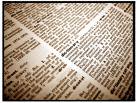On Zeigler: How He Teaches
 Thirty years of law teaching entitles an individual to pause, reflect, and pass along some insights about the craft. Or so it seems to me. Professor Donald Zeigler of New York Law School has availed himself of the opportunity by giving American legal education a slim yet rich volume with the three-word title How I Teach (Tribeca Square Press 2008).
Thirty years of law teaching entitles an individual to pause, reflect, and pass along some insights about the craft. Or so it seems to me. Professor Donald Zeigler of New York Law School has availed himself of the opportunity by giving American legal education a slim yet rich volume with the three-word title How I Teach (Tribeca Square Press 2008).
In much smaller print on this paperback’s cover appear the words “Successful techniques for the law school classroom.” These seven additional words, coupled with the big three, pose something of a paradox. Together they can be construed to suggest that all or virtually all of law teaching (or perhaps all or virtually all of what Professor Zeigler considers his law teaching) unfolds within the walls of the law school classroom. In Professor Zeigler’s defense, the seven words do lend themselves to an alternative construction, a construction that conveys the limits and boundaries of his scholarly project. Quite simply, Zeigler is eager to share with professional colleagues lessons that, presumably, have enabled him to develop into an effective classroom instructor and, also presumably, have enabled his students to extract considerable value from his classroom teaching. And share he does. It thus seems fair to cut Zeigler some slack in connection with the ten words he has selected to characterize his project. Enough said about the volume’s cover, title, and subtitle.

